If you’re wondering why your philodendron leaves are small, you’re not alone. Many philodendron growers have experienced this issue at one point or another. There are a few possible reasons for small leaves on a philodendron, including incorrect watering, too much or too little light, and pests or diseases. Luckily, there are a few things you can do to fix the problem.
What Causes Small Philodendron Leaves?
If your philodendron is in a spot that doesn’t get a lot of light, try moving it to a brighter location. One common reason that philodendron leaves are small is because the plant is not getting enough light.
Another reason for small leaves can be over-fertilization. If you’ve been fertilizing your philodendron regularly, try cutting back on the amount of fertilizer you’re using.
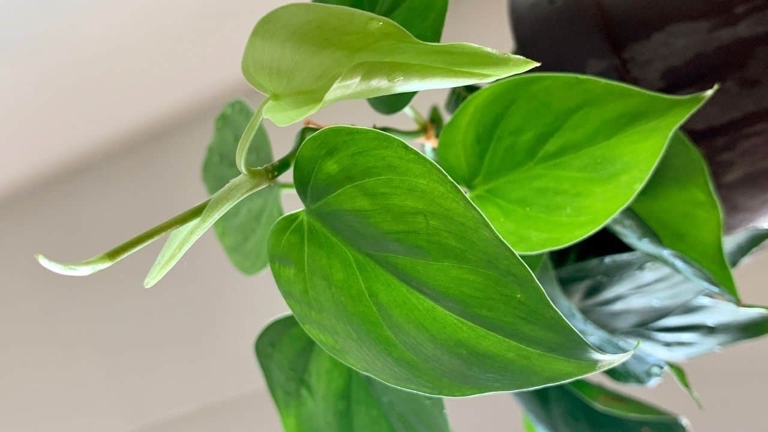
Finally, small leaves can also be a sign of stress. If your plant is in a location that’s too hot or too cold, or if it’s not getting enough water, this can cause the leaves to become small.
If you’re not sure what’s causing the small leaves on your philodendron, try moving it to a different location and see if the leaves start to grow larger.
Lack of Nutrients
The plant needs a balance of nitrogen, phosphorus, and potassium to stay healthy. If you notice that your philodendron’s leaves are small, it could be a lack of nutrients. A lack of any one of these nutrients can lead to stunted growth.
For example, if your plant is lacking nitrogen, choose a fertilizer with a high first number in the N-P-K ratio. Choose a fertilizer that’s high in the nutrient that your plant is lacking. Apply the fertilizer according to the package directions. To correct a nutrient deficiency, you’ll need to fertilize your plant.

If you’re not sure which nutrient your plant is lacking, you can take a soil sample to a local nursery or Cooperative Extension office for testing. Once you know which nutrient is lacking, you can fertilize accordingly.
Lack of Light
If your philodendron’s leaves are small, it’s likely due to a lack of light. Philodendrons are tropical plants that thrive in bright, indirect sunlight. If your plant is not getting enough light, it will start to produce smaller leaves in an attempt to get more light.
To fix the problem, move your philodendron to a brighter spot. If possible, place it near a window that gets plenty of sunlight. If you’re using grow lights, make sure they’re on for at least 12 hours a day. You may also need to increase the amount of artificial light you’re providing.

In this case, you’ll need to fertilize your plant more frequently. Once your philodendron gets more light, it will start to produce larger leaves. If the leaves are still small after a few weeks, it’s possible that the plant is not getting enough nutrients.
Small Container Size
If your plant is not getting enough light, it will start to produce smaller leaves. There are a few reasons your philodendron leaves may be small. Philodendrons need bright, indirect light to thrive. The most common reason is that the plant is not getting enough light.
Another reason your philodendron leaves may be small is because the plant is not getting enough water. Overwatering can cause the leaves to turn yellow and drop off. Philodendrons need to be watered regularly, but not too much.

If the leaves are still small after you make these changes, it is possible that the plant is not getting enough nutrients. If your philodendron leaves are small and the plant is not getting enough light or water, you can try moving it to a brighter spot or increasing the frequency of watering. You can try fertilizing your philodendron with a balanced fertilizer.
Pest Infestation
If you see any pests, you can remove them by hand or with a pesticide. There are a few different types of pests that can infest philodendrons, including mealybugs, aphids, and spider mites. These pests can cause leaves to become yellow, brown, or spotted, and can also cause the leaves to curl up or drop off. If you suspect that your philodendron has a pest infestation, you should inspect the leaves carefully and look for any signs of pests. Pest infestation is one of the most common problems that can cause philodendron leaves to become small.
Leaf Spot Diseases
These diseases are caused by a variety of fungi, bacteria, and viruses, and can result in small, brown, or black spots on the leaves. Leaf spot diseases can be difficult to control, and often require the use of fungicides or other chemicals. Leaf spot diseases are one of the most common problems that affect philodendrons. In some cases, the only way to control leaf spot diseases is to remove and destroy infected leaves.
Improper Watering
If you’re noticing that the leaves on your philodendron are small, it’s likely due to improper watering. Over-watering can cause the leaves to become yellow and drop off, while under-watering will cause the leaves to wilt and turn brown. The best way to water your philodendron is to allow the top inch of soil to dry out before watering again. This will ensure that your plant gets the moisture it needs without being overwatered.
Temperature Fluctuation
Philodendrons are tropical plants, so they prefer warm temperatures. If you notice that your philodendron leaves are small, it could be due to a temperature fluctuation. If the temperature drops, the leaves may become smaller.

To fix this, simply raise the temperature in your home or office. Just find a happy medium and your philodendron should be back to normal in no time! If the temperature is too high, the leaves may become wilted. You can do this by turning up the heat or using a space heater.
Low Humidity
If the leaves are still small after increasing the humidity, it could be because of too much direct sunlight or because the plant is getting too much water. If you notice that your philodendron leaves are small, it could be because of low humidity. Philodendrons are native to tropical regions and need high humidity to thrive. You can increase the humidity around your philodendron by placing it on a pebble tray or by using a humidifier.
Water Quality
To fix this, you can either use distilled water or water that has been filtered. Water quality is one of the most important factors in plant growth. If your water is high in minerals, it can cause your philodendron leaves to be small.
How Do I Get My Philodendron To Grow Bigger Leaves
First, make sure the plant is getting enough light. Philodendrons like to be kept moist, but not soggy, so water it when the top inch of soil is dry. Finally, fertilize the plant every few weeks to give it the nutrients it needs to grow. Second, make sure the plant is getting enough water. Philodendrons do best in bright, indirect light, so if it’s not getting enough light, the leaves will stay small. If you follow these tips, your philodendron’s leaves should start to grow bigger in no time! If your philodendron’s leaves are small, there are a few things you can do to encourage them to grow bigger.
Fertilize Regularly
If you want your philodendron to thrive, fertilize it every two weeks during the growing season and every month during the winter. Without regular fertilization, philodendrons will eventually stop growing and producing new leaves. Fertilizing regularly is one of the most important things you can do to keep your philodendron healthy and happy.
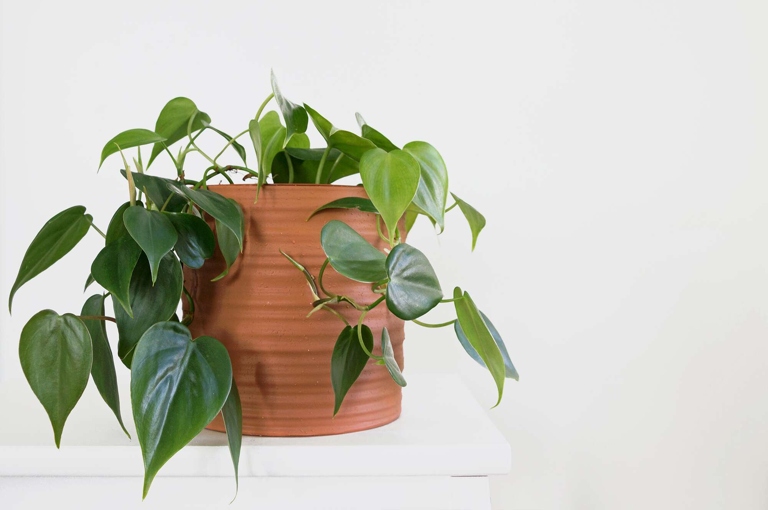
There are a few things to keep in mind when fertilizing philodendrons. Second, be sure to water the plant before fertilizing it. First, use a fertilizer that is specifically designed for philodendrons or other houseplants. Too much fertilizer can burn the roots and leaves of the plant. This will help the plant absorb the nutrients it needs. Finally, don’t over-fertilize.
By following these simple tips, you can keep your philodendron looking its best. Regular fertilization will help it grow healthy leaves and stay vigorous for years to come.
Ensure Bright Indirect Sunlight
There are a few reasons why this might be the case. One of the most common problems with philodendrons is that their leaves are small. Philodendrons need bright, indirect sunlight in order to thrive. One reason is that the plant is not getting enough light. If your philodendron is not getting enough light, its leaves will be small.

If you water your philodendron too much, the leaves will be small. Another reason why your philodendron’s leaves might be small is that the plant is not getting enough water. Philodendrons need to be watered regularly, but not too much.
Third, make sure that the plant is not getting too much water. If it is not, move it to a spot where it will get more light. If your philodendron’s leaves are small, there are a few things you can do to fix the problem. First, make sure that the plant is getting enough light. If it is not, water it more often. If it is, water it less often. Second, make sure that the plant is getting enough water.
Water Properly
Here are a few tips on how to do that: If you want your philodendron leaves to be large and healthy, you need to water them properly.
Too much water can cause the leaves to turn yellow and drop off. 1. Water your philodendron plants regularly, but don’t overdo it.
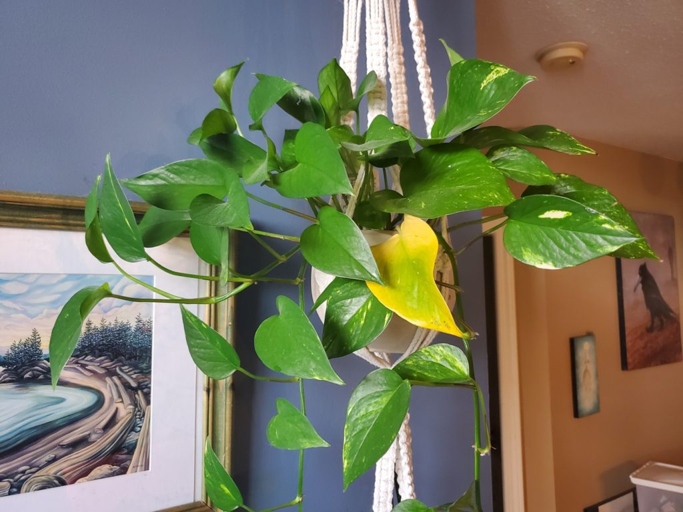
If it feels wet, it’s probably too wet. The best way to check is to stick your finger in the soil. Make sure the soil is moist but not soggy. 2.
3. Water early in the day so the leaves have time to dry off before nightfall.
4. If you live in a hot climate, you may need to water your philodendrons more often.
Use lukewarm water, as cold water can shock the plants. 5.
By following these tips, you’ll be sure to keep your philodendron leaves healthy and large.
Clean Dust from The Leaves
To clean the dust off, gently wipe the leaves with a soft, damp cloth. Be sure to do this in a well-ventilated area so you don’t inhale the dust. You can also use a leaf blower on the lowest setting to blow the dust off the leaves. If your philodendron leaves are small, it could be because of dust buildup on the leaves.
Ensure Optimum Temperature and Humidity
However, they will tolerate a wide range of temperatures and humidity levels. If you want your philodendron to flourish, you need to ensure optimum temperature and humidity. These plants are native to tropical regions, so they prefer warm, humid conditions.
To ensure optimum temperature and humidity for your philodendron, keep the following in mind:
-The ideal temperature range for philodendrons is between 65 and 80 degrees Fahrenheit.
-The ideal humidity level for philodendrons is between 60 and 70 percent.
-If the temperature or humidity level gets too low, the leaves of the plant will start to turn yellow and drop off.
-If the temperature or humidity level gets too high, the leaves of the plant will start to turn brown and drop off.
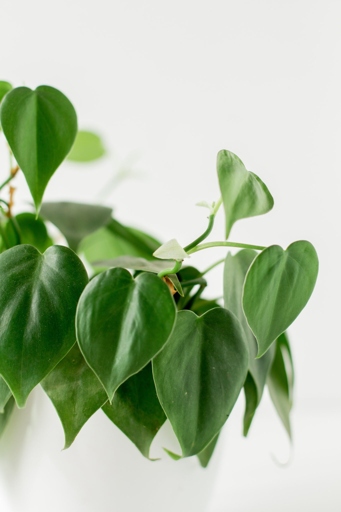
These devices will help to create the ideal conditions for your plant to thrive. To help maintain optimum temperature and humidity levels for your philodendron, consider investing in a humidifier and/or a temperature-controlled grow light.
Repot Philodendron when Root-Bound
Repotting will give the plant more room to grow, and also refresh the potting mix. Gently remove the plant from its pot, and loosen the roots. To repot a philodendron, choose a pot that is only 2-3 inches wider than the current pot. When a philodendron’s roots become crowded in their pot, it’s time to repot the plant. Be sure to use a well-draining potting mix. Water the plant well. Place the plant in the new pot, and fill in around it with potting mix.
Grow Big Leaf Philodendron Varieties
One possibility is that the plant is not getting enough light. Another possibility is that the plant is too wet or too dry. Philodendrons need bright, indirect light to thrive, so if yours is in a low-light spot, that could be the reason the leaves are small. Philodendrons like to be kept evenly moist, so if the soil is too dry or too wet, that can cause the leaves to stay small. If you’re wondering why your Philodendron leaves are small, there are a few things that could be causing the problem.

Second, check the soil moisture and adjust accordingly. If you think one of these might be the problem, there are a few things you can do to help your Philodendron grow big, healthy leaves. First, make sure it’s getting enough light. If it’s in a low-light spot, try moving it to a brighter spot. With a little TLC, your Philodendron should start to grow big, healthy leaves in no time! If it’s too dry, water it more often. If it’s too wet, let the soil dry out a bit between waterings.
How Do I Make My Philodendron Fuller?
If your Philodendron’s leaves are small, there are a few things you can do to help it become fuller.
First, check the plant’s pot size. If it is too small, the roots may be constricted, which can limit growth. Repotting into a larger pot can help the plant to grow more vigorously.
Move it to a brighter spot and see if the leaves start to grow larger. If it is not getting enough light, the leaves will be smaller. Second, make sure the plant is getting enough light. Philodendrons prefer bright, indirect light.
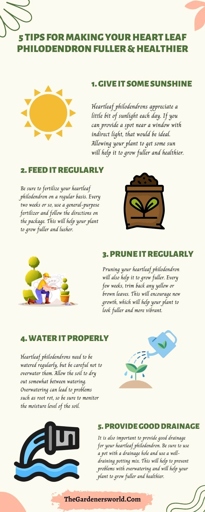
Third, fertilize the plant regularly. A monthly feeding with a balanced fertilizer will help the plant to grow more vigorously.
By following these tips, you should see an improvement in your Philodendron’s growth and fullness.
Frequently Asked Questions
1. Why are my Philodendron leaves small?
There are several possible reasons for small leaves on a Philodendron plant. The plant may be getting too much sun, not enough water, or not enough nutrients.
2. What can I do to fix the problem?
If the leaves are small because of too much sun, move the plant to a shadier spot. If the leaves are small because of insufficient water or nutrients, water the plant more frequently and/or fertilize it.
3. How often should I water my Philodendron?
Philodendrons typically need to be watered once a week, but the frequency may need to be increased if the leaves are small due to insufficient water.
4. What type of fertilizer should I use on my Philodendron?
A general-purpose fertilizer should be sufficient for most Philodendron plants.
5. How can I tell if my Philodendron is getting too much sun?
If the leaves of your Philodendron are turning yellow or brown, it is likely getting too much sun.
Final thoughts
If your Philodendron leaves are small, it could be due to a lack of nutrients, too much sun, or too much water. To fix the problem, you can try fertilizing your plant, moving it to a shadier spot, or letting the soil dry out between watering. With a little trial and error, you should be able to find the perfect solution for your plant.
